Weekly Current Affairs 8 July 2025 - UPSC PDF Download
Digital India Initiative Overview
10 Years of Digital India
 Why in News?
Why in News?
On July 1st, 2025, India celebrated a decade of the Digital India initiative, a flagship program launched in 2015 aimed at bridging the digital divide and empowering citizens through technology. Over the past ten years (2015-2025), this initiative has revolutionized internet access, governance, financial inclusion, and digital infrastructure, positioning India as the world's third-largest digital economy.
Key Takeaways
- Digital India has significantly improved internet access and digital services across the nation.
- The initiative has led to a massive increase in the number of internet users and mobile connections.
- Innovations like UPI and Aadhaar have transformed digital finance and citizen empowerment.
- While achievements are notable, challenges such as the digital divide and cybersecurity remain prevalent.
Additional Details
- Digital Infrastructure: Between 2014 and 2025, telephone connections increased from 933 million to 1.2 billion, with internet users growing by 285% and broadband connections surging by 1,452%.
- 5G Revolution: In just 22 months, 4.74 lakh 5G towers were installed, covering 99.6% of districts, while data costs dropped from Rs 308/GB in 2014 to Rs 9.34/GB in 2022.
- BharatNet for Rural India: 2.18 lakh Gram Panchayats were connected through 6.92 lakh km of optical fiber, with 4G connectivity reaching over 615,000 villages.
- Unified Payments Interface (UPI): As of April 2025, UPI facilitated 1,867.7 crore transactions worth Rs 24.77 lakh crore, accounting for 49% of global real-time transactions.
- Aadhaar & Direct Benefit Transfer (DBT): By April 2025, 1.42 billion Aadhaar IDs were generated, enabling Rs 44 lakh crore to be transferred, while eliminating 5.87 crore fake ration cards.
- AI and Semiconductors: The IndiaAI Mission has deployed over 34,000 GPUs to enhance AI innovation, and the India Semiconductor Mission supports chip and display manufacturing with significant capital assistance.
- Citizen Empowerment: Platforms like DigiLocker and the UMANG App have improved digital access, with UMANG offering over 2,300 services in 23 languages.
The Digital India initiative has made significant strides in service delivery, economic empowerment, and enhancing citizen participation. However, persistent challenges such as the digital divide, cybersecurity threats, and data privacy concerns need to be addressed. With continued reforms, inclusive infrastructure, and robust regulation, Digital India can further its vision of a Viksit Bharat, enabling equitable and sustainable digital growth.
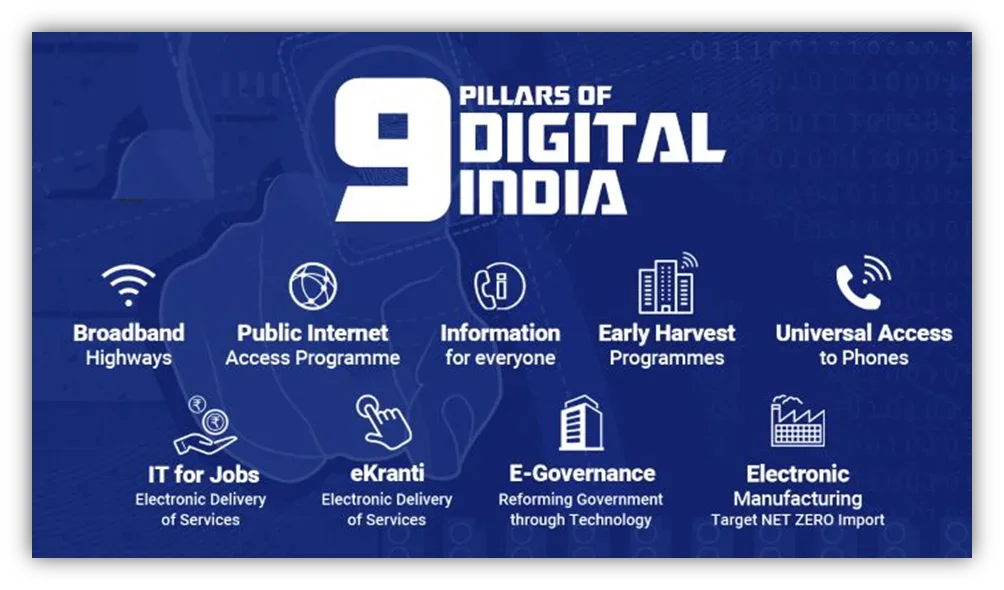
What is the Digital India Initiative?
- About: Launched in July 2015, the Digital India initiative aims to transform India into a digitally empowered society and knowledge-based economy.
- Objective: The initiative focuses on bridging the digital divide, ensuring inclusive digital access, driving economic growth, and improving the quality of life for citizens.
Nine Pillars of Digital India Initiative
- Broadband Highways: Expanding high-speed internet access nationwide.
- Universal Mobile Access: Ensuring mobile coverage in remote areas.
- Public Internet Access: Establishing Common Service Centres in underserved regions.
- E-Governance: Streamlining efficiency and transparency in citizen engagement.
- E-Kranti: Delivering government services online.
- Information for All: Digitization of records and open data for innovation.
- Electronics Manufacturing: Boosting local production to create jobs.
- IT for Jobs: Building youth IT skills through various missions.
- Early Harvest Programs: Addressing urgent digital needs like public Wi-Fi.
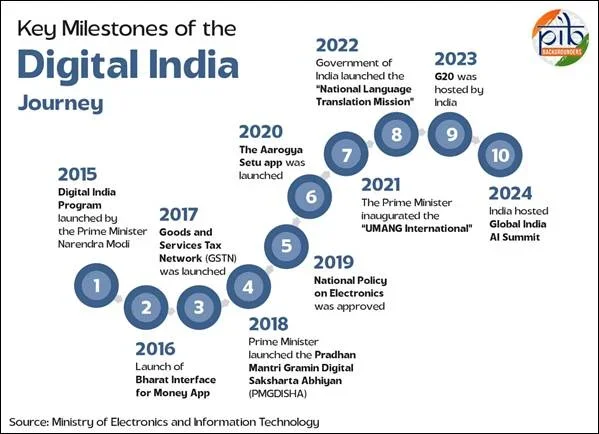
Key Issues Associated with the Digital India Initiative
- Uneven Digital Growth: Rural internet penetration is only 37% (2023), highlighting significant disparities.
- Cybersecurity Threats: A rise in cyber incidents, with a shortage of professionals to combat these threats.
- Data Privacy: Concerns over enforcement of the DPDP Act and data misuse persist.
- Infrastructure Bottlenecks: Low broadband speeds and patchy 5G coverage limit access, especially in rural areas.
- Regulatory Challenges: Frequent policy shifts and delays hinder the rollout of new technologies.
- Public Digital System Issues: Platforms like CoWIN face challenges in scalability and accuracy.
- Environmental Impact: Increased e-waste and energy consumption in data centers pose sustainability challenges.
Measures to Strengthen the Digital India Initiative
- Expand Internet Access: Enhance connectivity in rural areas through PM-WANI and promote regional language content.
- Enhance Cybersecurity: Develop comprehensive strategies and support indigenous cybersecurity R&D.
- Strengthen Data Privacy: Enforce the DPDP Act effectively and establish regional data protection offices.
- Promote Digital Literacy: Extend PMGDISHA to cover cyber awareness and skills training.
- E-Waste Management: Create a national framework for e-waste collection and eco-friendly technology.
- Integrate Digital Public Goods: Link platforms for better service delivery and reduce bureaucratic delays.
In conclusion, the Digital India initiative has made remarkable progress in enhancing service delivery and empowering citizens. However, addressing the ongoing challenges through strategic reforms and inclusive practices will be essential for fostering sustainable digital growth in the future.
Drishti Mains Question:Q. Digital India has bridged technological gaps but faces persistent challenges. Critically analyze this statement with reference to India’s digital transformation (2015–2025).
International Relations
QUAD At Sea Ship Observer Mission
 Why in News?
Why in News?
The Coast Guards of QUAD nations—India, Japan, the United States, and Australia—have initiated the 'QUAD At Sea Ship Observer Mission'. This mission aligns with the Wilmington Declaration (2024), which was adopted during the 6th QUAD Summit held in Delaware, USA.
Key Takeaways
- The mission is a pioneering maritime cooperation initiative.
- It aims to enhance interoperability, maritime domain awareness (MDA), and operational coordination.
- The initiative supports a rules-based order in the Indo-Pacific region.
Additional Details
- QUAD At Sea Ship Observer Mission: This initiative involves cross-embarkation, where officers, including women, are deployed on partner nations’ Coast Guard vessels, such as the USCGC Stratton, on its route to Guam.
- Mission Objectives: The mission focuses on joint training, developing Standard Operating Procedures (SOPs), conducting patrolling and search and rescue (SAR) operations, promoting maritime diplomacy, and ensuring gender inclusion. It aligns with India's SAGAR Vision and MAHASAGAR Doctrine.
The Wilmington Declaration represents a collective vision for a free, open, inclusive, and rules-based Indo-Pacific region, reinforcing QUAD as a "force for good" and emphasizing cooperation across strategic, security, health, technological, and economic domains.
What is the Wilmington Declaration?
- The declaration was adopted at the QUAD Leaders’ Summit in Wilmington, USA, in September 2024.
- It emphasizes the QUAD's commitment to a free and open Indo-Pacific, launching initiatives such as MAITRI for interoperability and maritime domain awareness.
- Other initiatives include the Quad Logistics Network and the Ports of the Future Partnership.
What is the QUAD?
The Quadrilateral Security Dialogue (QUAD) is a strategic forum composed of India, Australia, Japan, and the United States, aimed at ensuring peace, stability, and prosperity in the Indo-Pacific region. It promotes a free, open, inclusive, and rules-based order while enhancing regional resilience and cooperation.
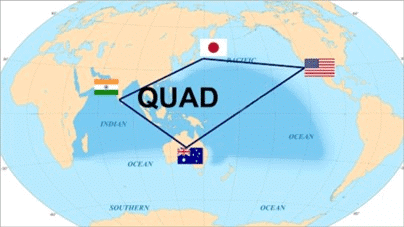
Origin of the QUAD
- The QUAD was formed in the aftermath of the 2004 Indian Ocean tsunami, where India, Japan, the US, and Australia coordinated humanitarian assistance.
- It was formally proposed in 2007 by Japanese PM Shinzo Abe but became dormant after Australia withdrew in 2008 due to Chinese pressure.
- The dialogue was revitalized in 2017 due to rising concerns over China's assertiveness in the Indo-Pacific, culminating in the first Leaders’ Summit in 2021.
Objectives of QUAD
- The QUAD aims to tackle regional and global challenges through cooperation in areas such as:
- Climate and clean energy
- Infrastructure
- Emerging technologies
- Maritime security
- Counter-terrorism
- Humanitarian Assistance and Disaster Relief (HADR)
- Expansion Potential: "QUAD-plus" meetings have included nations such as South Korea, New Zealand, and Vietnam, indicating a potential for future expansion.
In conclusion, the QUAD At Sea Ship Observer Mission represents a significant step in enhancing maritime cooperation among member nations, reinforcing their commitment to a stable and inclusive Indo-Pacific region.
Historical Events
Hul Diwas
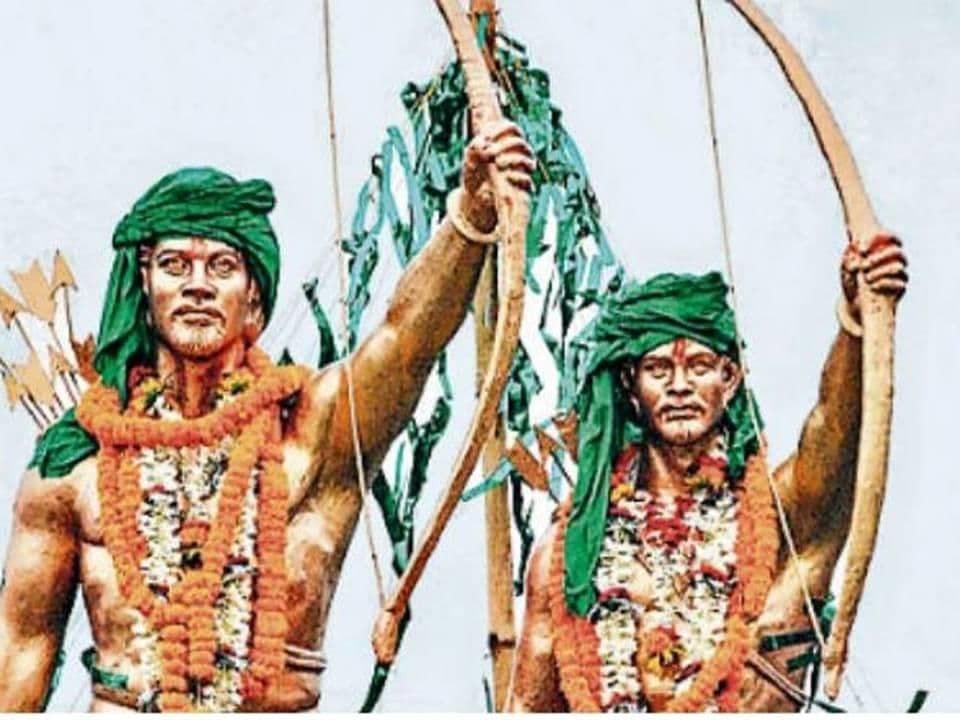 Why in News?
Why in News?
The Prime Minister recently paid a heartfelt tribute on Hul Diwas (30th June), marking the anniversary of the Santhal uprising and honoring the legacy of notable tribal leaders like Sido-Kanhu, Chand-Bhairav, Phulo-Jhano, and other tribal martyrs who courageously resisted colonial oppression.
Key Takeaways
- The Santhal Uprising, also known as Santhal Hul, was a significant tribal revolt against British rule in India.
- It began in 1855, two years before the major 1857 Revolt, aiming to combat economic exploitation and land alienation.
Additional Details
- Leaders & Unity: The uprising was led by Sidhu and Kanhu, who united 32 castes and communities, demonstrating remarkable tribal solidarity against colonial forces.
- Roots of Rebellion: The rebellion was triggered by the 1832 Damin-i-Koh settlement in the Rajmahal hills, where the Santhals faced land-grabbing and bonded labor due to systemic oppression from British-backed zamindars.
- Impact: The uprising led to the enactment of the Santhal Parganas Tenancy Act of 1876 (SPT Act), which prohibited the transfer of Adivasi land to non-Adivasis, thereby securing Santhal land rights. This was followed by the Chota Nagpur Tenancy Act of 1908 (CNT Act) that restricted land transfers only within the same caste and area with the collector's approval.
The Santhal Tribe originally hails from Birbhum and Manbhum (now in West Bengal) and migrated due to the 1770 Bengal famine and British policies. They later settled in Damin-i-Koh (Jharkhand) under the Permanent Settlement Act of 1790 focused on revenue farming.
Demographically, they are the third-largest Scheduled Tribe in India, following the Gonds and Bhils, primarily residing in Bihar, Odisha, and West Bengal.
In terms of culture and religion, the Santhals celebrate agriculture-related festivals such as Sohrai, Baha, and Karam. They communicate in Santhali, a language included in the 8th Schedule of the Indian Constitution, and they utilize the Ol Chiki script.
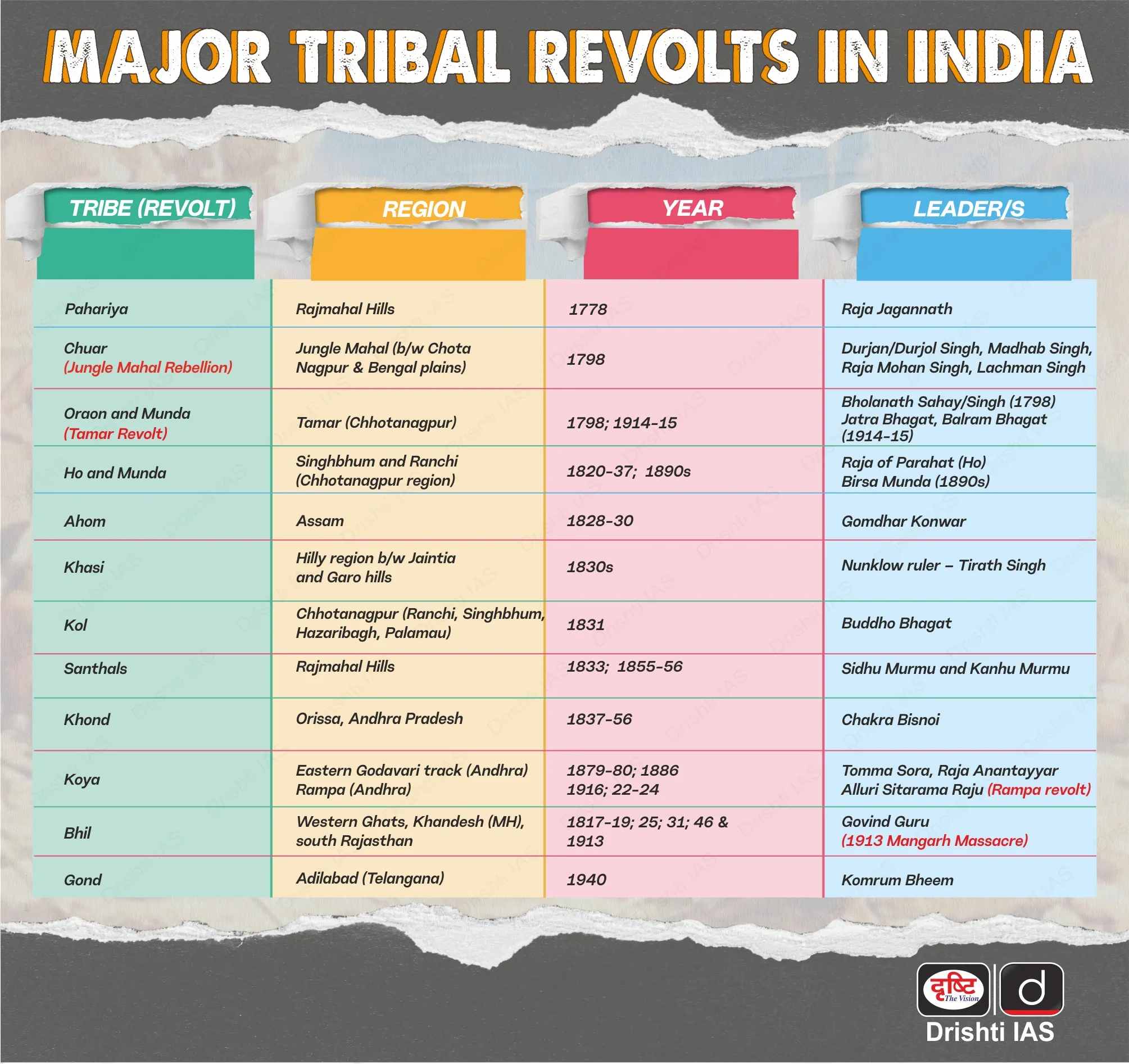
Educational Content on Constitutional Debate
Debate Over 'Socialist' and 'Secular' in the Preamble
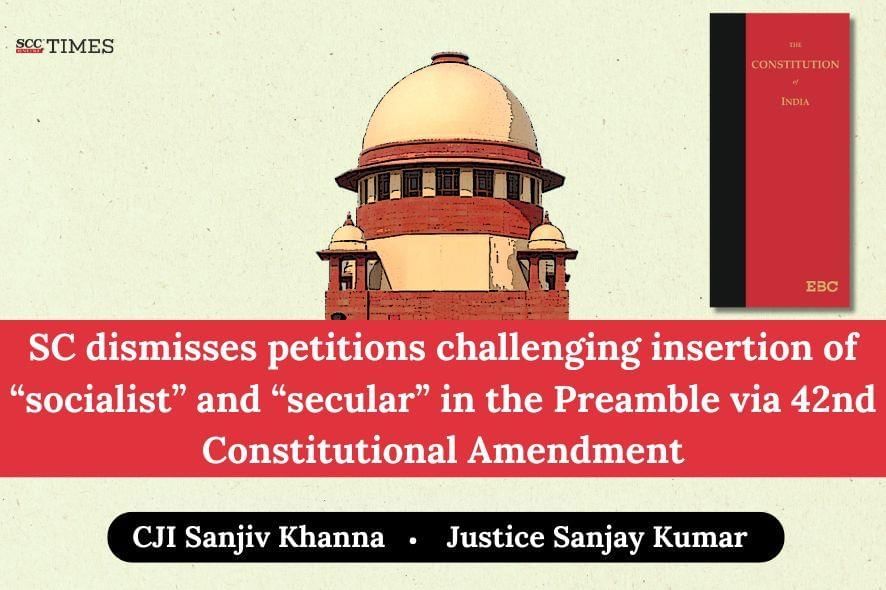 Why in News?
Why in News?
A renewed debate has emerged over the inclusion of the words “socialist” and “secular” in the Preamble of the Indian Constitution. These terms were added during the Emergency via the 42nd Amendment Act of 1976. Critics argue that their insertion lacked broad consultation and may not align with India's inherently secular civilizational ethos. This discussion has reignited questions about their constitutional legitimacy and contemporary relevance.
Key Takeaways
- The Preamble outlines the core values and guiding principles of the Constitution of India.
- Terms "socialist" and "secular" were added during a politically tumultuous period, raising concerns over their legitimacy.
- The debate centers on the balance between original constitutional intent and evolving democratic values.
Additional Details
- Preamble: The Preamble serves as an introductory statement of the Constitution, reflecting the aspirations of the people and the spirit of the Constitution.
- Insertion of ‘Socialist’ and ‘Secular’: Originally, the Constitution declared India a Sovereign Democratic Republic, committed to Justice, Liberty, Equality, and Fraternity. The 1976 amendment added these terms, signifying the state’s commitment to reducing inequality and ensuring distributive justice.
- Secularism in India: Indian secularism is an inclusive model, promoting equal respect for all religions and preventing domination while maintaining state neutrality. It upholds pluralism and constitutional morality.
- Key Dilemmas: The inclusion of the term 'secular' faced challenges such as concerns over ideological imposition and the risk of misinterpretation, as well as the need for legislative flexibility.
The inclusion of ‘socialist’ and ‘secular’ in the Preamble remains a point of constitutional debate, reflecting the dynamic tension between original intent and evolving democratic values. While the Supreme Court has upheld these terms as part of the basic structure doctrine, concerns regarding procedural legitimacy and ideological imposition persist.
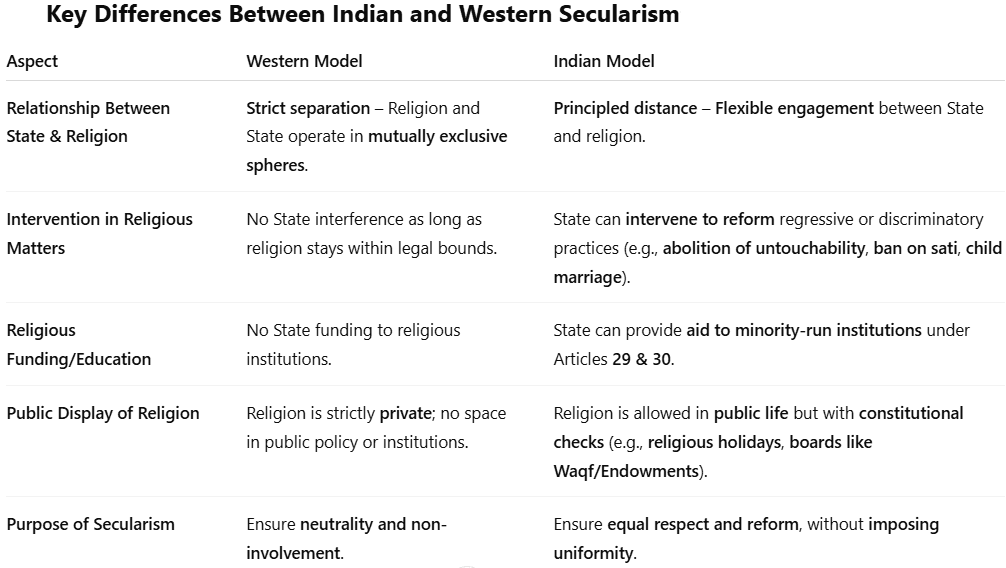
Employment Linked Incentive Scheme
Employment Linked Incentive Scheme
 Why in News?
Why in News?
The Union Cabinet has approved the Employment Linked Incentive (ELI) Scheme, which was announced in the Union Budget 2024-25 as part of a larger Rs 2 lakh crore youth employment initiative. The ELI Scheme has a budget of approximately Rs 1 lakh crore and will run from August 2025 until July 31, 2027.
Key Takeaways
- The scheme aims to support 1.92 crore first-time employees registered with the Employees’ Provident Fund Organization (EPFO).
- Employers hiring additional workers will receive financial incentives for each new employee hired.
- It is designed to create approximately 2.6 crore jobs across various sectors, particularly in manufacturing.
- Payments will be facilitated through a Direct Benefit Transfer (DBT) mechanism.
Additional Details
- Part A: Incentives for First-Time Employees: The scheme targets first-time EPFO-registered employees by providing a one-month EPF wage (up to Rs 15,000), distributed in two installments after 6 and 12 months of service. The second installment is conditional upon completing a financial literacy program. A portion of the funds will be deposited into a fixed savings account to encourage long-term savings.
- Part B: Support to Employers: Employers hiring additional workers with a salary of less than or equal to Rs 1 lakh will be eligible for up to Rs 3,000 per month for a period of two years. Firms with fewer than 50 employees must hire at least 2 new employees, while those with 50 or more employees must hire at least 5 new employees, with a minimum retention period of 6 months.
- Incentive Payment Mechanism: Payments for first-time employees will be processed through the Aadhar Bridge Payment System (ABPS) via DBT. Employers will receive their incentives directly into their Permanent Account Number (PAN)-linked accounts.
The Employment Linked Incentive Scheme is significant as it aims to boost private sector hiring by reducing the costs associated with recruitment, particularly for first-time jobseekers. The focus on youth employment aims to provide wage support and social security coverage to fresh graduates and new entrants into the workforce. Additionally, the scheme encourages job retention and upskilling by linking incentives to both retention and financial literacy, while also promoting the formalization of employment through EPFO-linked payments. This initiative prioritizes economically disadvantaged youth, thereby supporting inclusion and upward mobility in the labor market.
Geology and Earth Science
Earth’s Oldest-Known Rocks
 Why in News?
Why in News?
A volcanic rock formation located in Quebec, Canada, specifically in the Nuvvuagittuq Greenstone Belt, has been recognized as the oldest-known rock on Earth. This rock is dated to approximately 4.16 billion years old, originating from the Hadean eon, which spans from 4.5 to 4.03 billion years ago. This period is significant as it marks the time when Earth itself was formed, around 4.6 billion years ago.
Key Takeaways
- The rocks are metamorphosed volcanic basalt, formed from magma that solidified beneath the Earth's surface.
- They provide vital insights into Earth's early crust, primordial oceans, and environments possibly conducive to the origin of life.
Additional Details
- Dating Methods: The age of these rocks has been confirmed through two radioactive dating methods, particularly the samarium-neodymium decay technique, marking them as the oldest-known intact rocks on the planet.
- Although zircon crystals found in Australia are older (about 4.4 billion years), the Quebec rocks are notable for being the oldest intact geological formations available for study.
- Previous beliefs suggested that early Earth was a molten hellscape, but new evidence indicates a cooling crust, the presence of shallow oceans, and an early atmosphere that may have supported life.
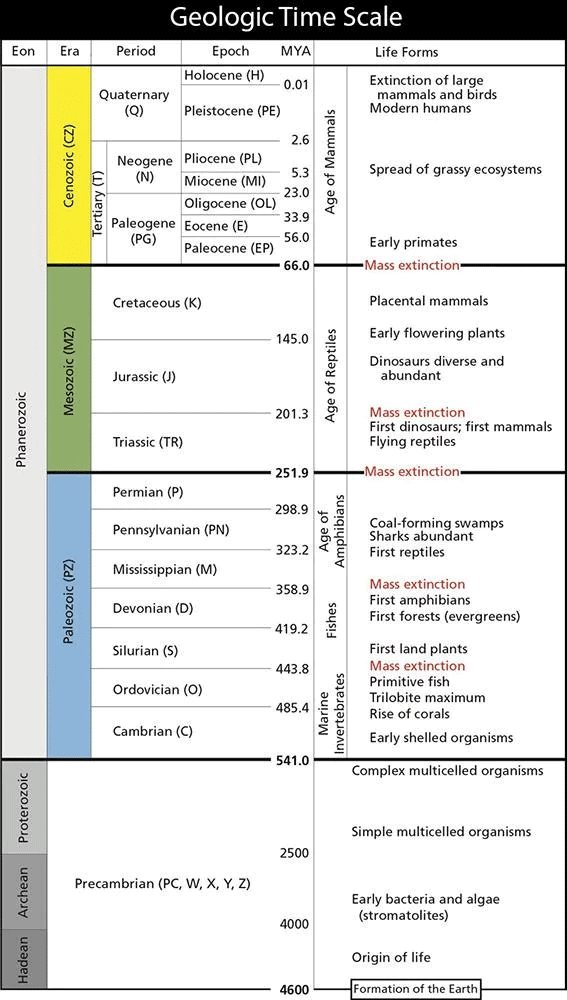
This discovery sheds light on the conditions of early Earth and the processes that shaped its geological history, enhancing our understanding of the planet's formation and the potential for life in its formative years.
Goods and Services Tax (GST) Overview
8 Years of GST
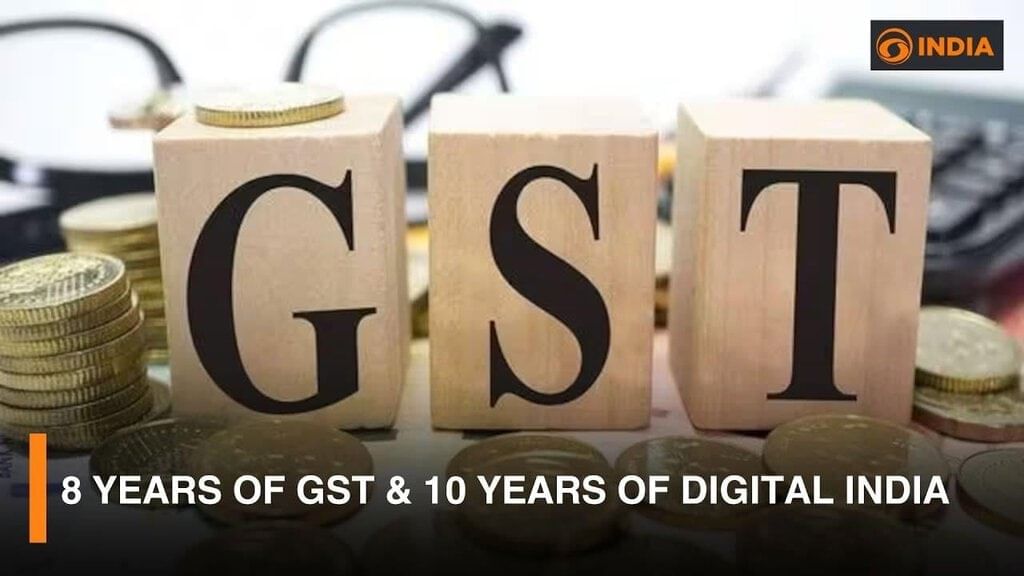 Why in News?
Why in News?
As the Goods and Services Tax (GST) completes 8 years since its launch on 1st July 2017, experts recognize its achievements in enhancing tax integration and digitization. However, they also stress the need for simplification, rate rationalization, and a reduction in compliance burdens.
Key Takeaways
- Record Revenue Growth: GST revenues have shown continuous growth, reaching a gross collection of Rs 22.08 lakh crore in FY 2024-25.
- Digital Transformation: The system has evolved from manual filings to e-invoicing, enhancing compliance and efficiency.
- Expanded Taxpayer Base: Over 1.51 crore active GST registrations as of April 30, 2025, marking significant formalization of the economy.
- Ease of Doing Business: GST has removed inter-state tax barriers, improving logistics efficiency.
- Efficient Refund Processing: Automated IGST refunds have increased speed and liquidity for exporters.
Additional Details
- What is GST? The 101st Amendment Act of 2016 introduced a unified indirect tax system in India, replacing multiple central and state taxes with a value-added tax on goods and services.
- Main Features:
- Supply-Based Taxation: GST is levied on the supply of goods and services.
- Destination-Based System: Operates as a consumption tax, replacing the origin-based model.
- Multiple Tax Slabs: Five different rates (0%, 5%, 12%, 18%, and 28%) exist based on product classification.
- Dual Structure: Both the Centre (CGST) and States (SGST) levy tax on the same transaction.
- Key Challenges:
- Exclusion of items like petroleum and alcohol, leading to tax cascading and cash flow issues.
- Delay in GST Appellate Tribunal's functionality causing backlog of appeals.
- Complex rate structure resulting in disputes and litigation.
- Procedural challenges despite digital advancements.
In conclusion, while GST has significantly transformed India's tax landscape, challenges such as the exclusion of certain sectors, rate complexity, and dispute delays remain. Addressing these issues through phased inclusion, rationalization of rate slabs, and enhancing digital integration is vital to achieving a truly effective "One Nation, One Tax" system and supporting India's ambition of becoming a USD 5 trillion economy.
Global Gender Agenda
UN Women & the Global Gender Agenda
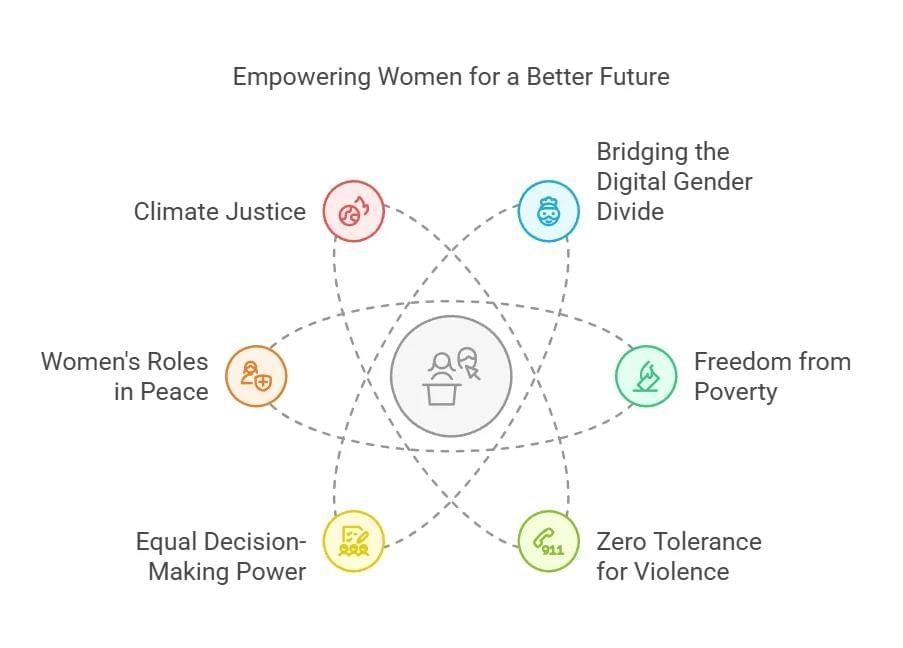 Why in News?
Why in News?
As we approach the 30th anniversary of the Beijing Declaration and Platform for Action, the 25th anniversary of UNSC Resolution 1325 on Women, Peace and Security (WPS), and its own 15th anniversary, UN Women has issued a warning that women's rights are encountering a "historic and precarious moment." This is largely due to escalating violence, worsening poverty, and increasing digital and political exclusion affecting women globally.
Key Takeaways
- Political Backlash: In 2024, nearly 1 in 4 countries noted a backlash against women's rights.
- Violence Against Women: In 2023, 85,000 women and girls were intentionally killed, averaging one woman killed every 10 minutes by a partner or close relative.
- Economic Disparity: Women earn 20% less than men for equal work and undertake 2.5 times more unpaid care work.
- Education and Food Insecurity: 119 million girls are out of school, and 47.8 million more women face food insecurity compared to men.
- Climate Vulnerability: By 2050, climate change may push an additional 158 million women into extreme poverty.
- Health Risks: Nearly 800 women die daily from preventable pregnancy-related causes.
Additional Details
- Beijing Declaration and Platform for Action (BPfA): Adopted in 1995, this landmark global framework aims to advance the rights of women and girls, focusing on legal protection, access to essential services, youth engagement, and social transformation. India is a signatory to the BPfA.
- Beijing+30 Action Agenda: This initiative marks the anniversary (1995-2025) of the BPfA and reviews its implementation, focusing on six key areas for gender equality.
- UN Women’s Proposed Solutions: These include strengthening commitment and leadership, promoting gender-inclusive peacebuilding, advocating for economic empowerment, eradicating poverty and food insecurity, and expanding access to education and technology.
In conclusion, despite global commitments to women's rights, significant barriers persist. Governments must enforce legal reforms, promote economic empowerment, foster inclusive peacebuilding, and address climate justice to reverse the regression and ensure continued progress for women's rights.
Custodial Torture in India
Custodial Torture in India
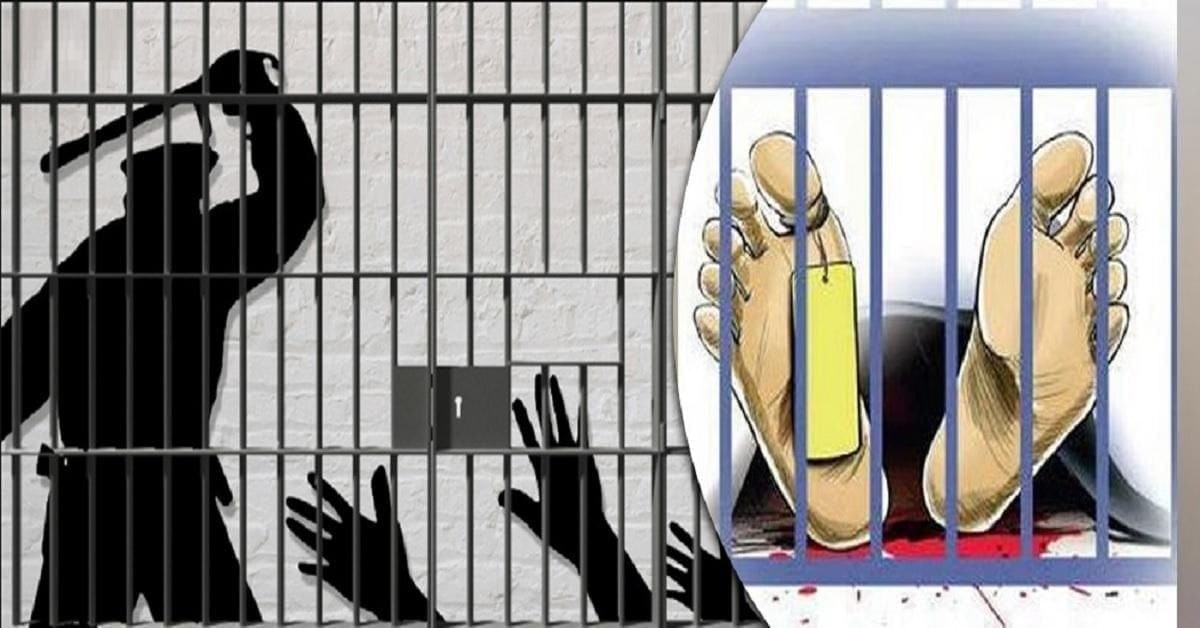 Why in News?
Why in News?
The recent custodial death in Tamil Nadu has once again highlighted the critical issue of custodial torture in India.
Key Takeaways
- Custodial torture involves the infliction of physical or mental suffering on individuals held by police or authorities.
- It is a severe violation of human rights, often leading to custodial deaths.
- India recorded 490 custodial deaths between 2016 and 2022, with Uttar Pradesh having the highest number.
Additional Details
- What is Custodial Torture? It refers to causing physical or mental suffering to individuals held in custody, which can lead to fatal outcomes known as custodial deaths.
- Types of Custodial Torture:
- Physical Torture: Includes beatings, electric shocks, suffocation, sexual violence, forced stress positions, and denial of medical care.
- Psychological Torture: Involves threats, humiliation, sleep deprivation, solitary confinement, and mock executions.
- Custodial Deaths in India: Between 2016 and 2022, there were 490 recorded custodial deaths, with significant numbers in southern states and a disproportionate impact on Scheduled Castes.
- Constitutional and Legal Safeguards: Provisions in the Indian Constitution and various laws aim to protect against custodial torture, including Articles 14, 21, 20(1), and 20(3).
- Challenges: Include lack of specific anti-torture legislation, weak enforcement, institutional impunity, and fear of reprisal among victims.
Custodial torture remains a pressing human rights violation in India, exacerbated by legal gaps and systemic failures. Urgent reforms and stringent measures are necessary to address this issue effectively.
Educational Content on AI and Copyright
Blocking of AI Web Crawler
 Why in News?
Why in News?
In a significant development, leading publishers in the US and UK have begun to block Artificial Intelligence (AI) web crawlers to safeguard their content from unauthorized use. This has sparked renewed discussions in India regarding the need for consent-based copyright protections and equitable revenue distribution, highlighting vital issues in digital governance, copyright enforcement, and the ethical application of AI.
Key Takeaways
- AI Web Crawlers: Automated tools that collect content from the internet to train AI models.
- Regulatory Challenges: India's current lack of a framework for overseeing AI access to web content.
- Copyright Issues: Use of content for training AI without proper consent or compensation.
- Ethical Concerns: The need for transparency in data usage by AI developers.
Additional Details
- What is an AI Web Crawler? An AI web crawler is a type of automated software or bot that scans and collects content from the internet primarily for training AI models, such as Large Language Models (LLMs), or to aid in real-time information retrieval for AI assistants.
- Types of AI Web Crawlers:
- Model Training Crawlers: These extract data from websites to train generative AI models. Examples include GPTBot from OpenAI and Amazonbot from Amazon.
- Live Retrieval Crawlers: These bots gather real-time data from websites to enhance pre-trained models during user interactions, ensuring accurate and updated responses. They are utilized by platforms like Bing and ChatGPT.
- Lack of Regulatory Framework: India currently has no specific regulations governing how AI companies can access and utilize online content. This results in larger tech companies profiting from Indian content without consent, leaving smaller publishers vulnerable.
- Copyright Enforcement: The existing Copyright Act of 1957 does not adequately address AI-specific scenarios, such as the rights associated with derivative outputs or training data. There is ambiguity surrounding the concepts of fair use versus unlicensed training.
- Ethical Use of AI: Many AI developers do not disclose the data sources used, denying original creators recognition or compensation. Additionally, using outdated or unverified material for training can lead to biases and misinformation, eroding public confidence in AI technologies.
- Path Forward for India: India should consider global frameworks like the EU's AI Act of 2024, which addresses issues of copyrighted data in AI training. Establishing a consent-based licensing framework and defining unauthorized data scraping is crucial.
These challenges highlight the urgent need for India to create a digital ecosystem that respects creators' rights while fostering innovation. The Ministry of Electronics and IT (MeitY) and the Ministry of Information & Broadcasting (I&B) should work together to implement technical safeguards and provide tools to help publishers protect their digital content.
Chemical Industry
NITI Aayog Report on Chemical Industry
 Why in News?
Why in News?
The NITI Aayog has released its report titled ‘Powering India’s Participation in Global Value Chains’, which outlines an ambitious roadmap for India to emerge as a global chemical manufacturing powerhouse. The report aims for India to achieve a 12% share in global chemical value chains (GVC) and reach a USD 1 trillion output by 2040.
Key Takeaways
- India ranks as the 6th largest chemical producer globally, contributing over 7% to the manufacturing GDP.
- The sector supports critical industries: pharma, textiles, agriculture, and construction.
- India holds only a 3.5% share in global chemical value chains, with a USD 31 billion trade deficit in 2023.
- There is a significant shortage of skilled professionals (30%) in the chemical sector.
Additional Details
- Global Standing: India is a major player in the global chemical market, but it has a fragmented sector primarily dominated by MSMEs, with growth concentrated in states like Gujarat, Maharashtra, and Tamil Nadu.
- Import Dependence: Over 60% of critical Active Pharmaceutical Ingredients (APIs) are sourced from China, highlighting the sector's vulnerability.
- Opportunities: Rising domestic demand in agrochemicals, pharmaceuticals, and construction is expected to drive growth, along with expected job creation of 7 lakh skilled jobs by 2030.
- Policy Interventions: Proposed measures include establishing world-class chemicals hubs, enhancing port infrastructure, and fast-tracking environmental clearances.
In conclusion, the chemical industry is poised to be a significant driver of GDP growth in India. With effective policy interventions, including the establishment of chemical hubs and an emphasis on research and development, India aims to transform into a global manufacturing leader by 2030. However, addressing challenges such as import dependency and regulatory hurdles is crucial for realizing this potential.
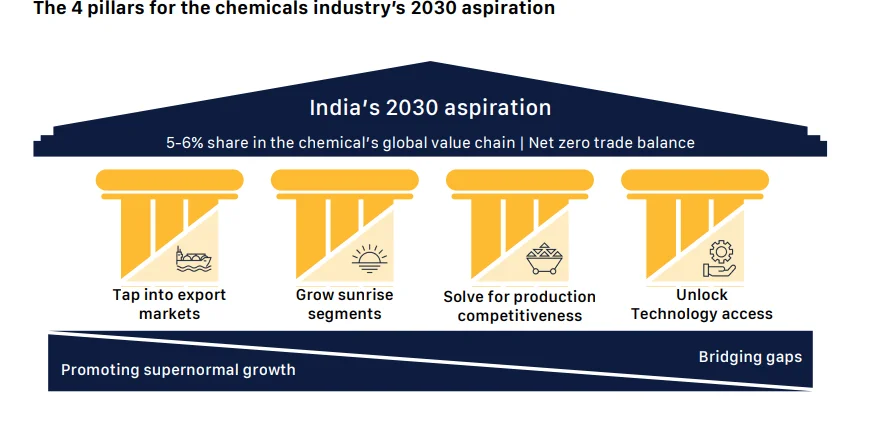
Legal Studies
SC Upholds Legislative Authority of State
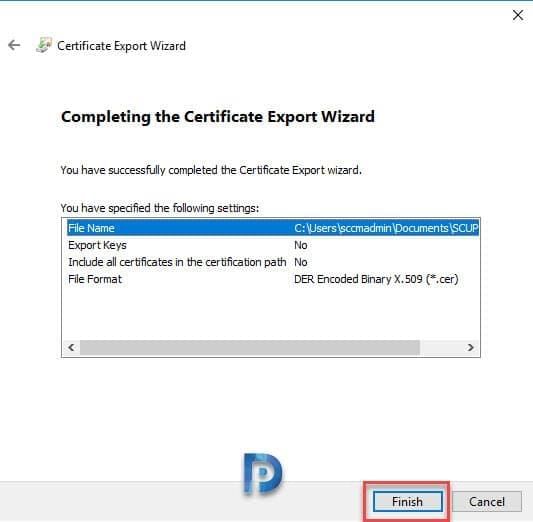 Why in News?
Why in News?
The Supreme Court ruling in the Nandini Sundar vs. State of Chhattisgarh case from 2011 emphasizes the legislative power of state assemblies in India and their interaction with judicial decisions within the democratic framework.
Key Takeaways
- The Supreme Court directed the Chhattisgarh government to stop using Special Police Officers (SPOs) due to their inadequate training and violations of constitutional rights.
- In response, the state passed the Chhattisgarh Auxiliary Armed Police Forces Act to establish a new auxiliary force.
- The Supreme Court rejected a contempt plea, affirming the state's legislative authority as long as laws are constitutional.
- The ruling reaffirmed the doctrine of separation of powers, allowing legislatures to enact laws that may alter the basis of previous judgments.
Additional Details
- Background of the Case: The Supreme Court found that the use of SPOs in anti-Maoist operations violated Articles 14 and 21 of the Constitution, prompting legislative action.
- Legislative Authority: The Court clarified that state legislatures can enact new laws to remove the basis of a judgment or to validate previously struck down laws.
- Similar Judicial Pronouncements: In the Indian Aluminium Co. vs. State of Kerala (1996) case, the Supreme Court upheld legislative power to amend or enact laws retrospectively to remove the basis of a judgment.
- Salwa Judum & Koya Commandos: This was a state-backed anti-Maoist initiative launched in 2005, involving tribal youth, primarily from the Koya tribe, to combat Maoist insurgency.
This ruling reinforces the balance of power between the judiciary and the legislature in India, ensuring that while courts can issue orders, state legislatures retain the authority to legislate within constitutional limits.
India - Trinidad and Tobago Relations
India - Trinidad and Tobago Relations
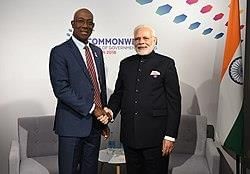 Why in News?
Why in News?
Prime Minister Narendra Modi's recent visit to Trinidad and Tobago marks a significant milestone, being the first visit by an Indian Prime Minister since 1999. During this visit, he was honored with the country's highest civilian award, the Order of the Republic of Trinidad and Tobago, in recognition of his global leadership, strong engagement with the diaspora, and humanitarian efforts during the Covid-19 pandemic.
Key Takeaways
- Trinidad and Tobago joined India's initiatives on Disaster Resilient Infrastructure and Biofuels.
- India will provide funding for up to five grassroots development projects annually.
- An MoU was signed to enhance cooperation in the pharmaceutical sector.
- Training programs for Trinidad and Tobago diplomats in India were agreed upon.
- The OCI card facility will now extend to the sixth generation of the Indian diaspora.
- Collaboration on digital solutions, including India Stack initiatives, was established.
- India provided USD 1 million in agro-machinery to support local agriculture.
- Both nations committed to strengthening counterterrorism efforts and regional ties.
- Cultural exchanges through the establishment of ICCR Chairs and training for Hindu priests were announced.
Additional Details
- Historical Ties: The relationship between India and Trinidad and Tobago dates back to 1845, when the first Indian indentured laborers arrived. Today, their descendants account for 40-45% of the population, significantly influencing the socio-economic landscape.
- Bilateral Relations: Formal diplomatic relations were established in 1962, characterized by a warm and evolving partnership.
- Economic Cooperation: A trade agreement granting Most Favoured Nation status was signed in 1997, fostering trade growth post-pandemic.
- Development Initiatives: A USD 1 million project implemented during the pandemic included advanced healthcare technology in Trinidad and Tobago.
Overall, the evolving relations between India and Trinidad and Tobago reflect a commitment to mutual cooperation across various sectors, including culture, economy, and disaster resilience, highlighting India's broader strategy in the Global South.
Climate Change Conference
Bonn Climate Change Conference 2025
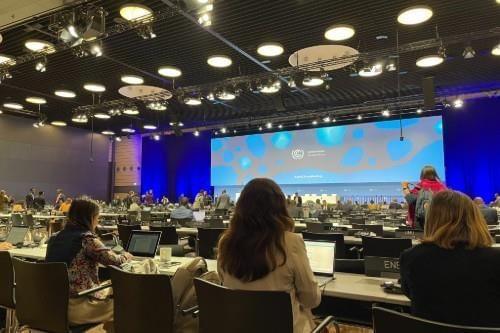 Why in News?
Why in News?
The 62nd annual session of the Bonn Climate Change Conference was held in Bonn, Germany. This mid-year meeting sets the stage for important climate negotiations leading up to the 30th Conference of the Parties (COP30) to the United Nations Framework Convention on Climate Change (UNFCCC), which will take place in Belem, Brazil.
Key Takeaways
- Progress on the Global Goal on Adaptation (GGA) was noted, but disagreements over finance and Means of Implementation (MoI) hindered consensus. A draft list of 100 indicators is anticipated at COP30.
- Significant advancements were made on the Just Transition Work Programme (JTWP), with negotiators agreeing to establish a Belém Action Mechanism for sharing fair transition strategies.
- Most nations failed to meet the February 2025 deadline for updating their Nationally Determined Contributions (NDCs), which affects efforts to limit global warming to 1.5°C.
- Intense discussions on climate finance, with developing nations pressing for the fulfillment of financial pledges, particularly the mobilization of USD 1.3 trillion annually until 2030.
- The Loss and Damage Fund remains underfunded, with only USD 768 million pledged against the required USD 1 trillion.
Additional Details
- Global Goal on Adaptation (GGA): Initiated in the Paris Agreement (2015), the GGA aims to enhance adaptive capacity and climate resilience. Concrete actions were delayed until COP28 in Dubai, where a framework for its implementation was adopted.
- Just Transition Work Programme (JTWP): Launched at COP27 (2022), the JTWP aims to ensure that climate actions are equitable and aligned with national development goals while supporting communities affected by the transition from fossil fuels.
- National Climate Plans: Brazil has called on nations to submit stronger NDCs by September 2025 to meet the 1.5°C target, as current submissions are insufficient.
- Climate Finance: Disputes arose as developing countries emphasized the need for public grants, while wealthier nations suggested private finance as a solution.
- Loss and Damage Fund: Only USD 321 million has been paid into the fund, highlighting the gap between pledges and actual contributions.
The Bonn Climate Change Conference serves as a critical platform for advancing global climate negotiations and addressing urgent environmental challenges. The outcomes of this conference will significantly influence the direction of future climate policies and commitments at COP30.



















